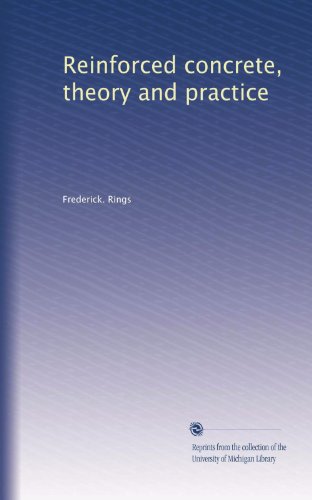
Reinforced Concrete: Theory and Practice
by Frederick Rings
Publisher: Batsford 1910
ISBN/ASIN: B003YRIXLY
Number of pages: 252
Description:
The author's principal object in writing this book was not to put forward any particular method of construction, but to collect in a concise form what seemed to him best of the many formulae and systems used in various countries, and to deal with the subject in such a manner as to be intelligible to average students of architecture who have not been required to devote that amount of study to the theory of construction which is demanded of the young engineer.
Download or read it online for free here:
Download link
(multiple formats)
Similar books
 Roller Coaster Physics
Roller Coaster Physicsby Tony Wayne
This text discusses some of the principles involved in the design of a roller coaster. It is intended for the middle or high school teacher, and physics students. Many of the concepts can be applied to topics other than roller coasters.
(18771 views)
 Computer Analysis & Reinforced Concrete Design of Beams
Computer Analysis & Reinforced Concrete Design of Beamsby Fady R. S. Rostom - Fadzter Media
This project deals with the creation of a computer application that analyzes and designs structural beams. The project also aims at emphasizing the importance of computers in the solution of everyday engineering problems.
(31757 views)
 Asphalt: Its Composition, Properties and Uses
Asphalt: Its Composition, Properties and Usesby Ralph Newton Traxler - Reinhold Pub. Corp.
A short review on the composition, properties, and applications of asphalt. The aim has been to present the essential points. Attention is given to the manufacture of asphalt, the forms in which it is used, and finally its important applications.
(10498 views)
 Elementary Applied Mechanics
Elementary Applied Mechanicsby A. W. Thomson, T. Alexander - MacMillan
The work forms an elementary consecutive treatise on the subject of Internal Stress and Strain. The whole is illustrated by a systematic and graduated set of Examples. At every point graphical methods are combined with the analytical.
(27599 views)